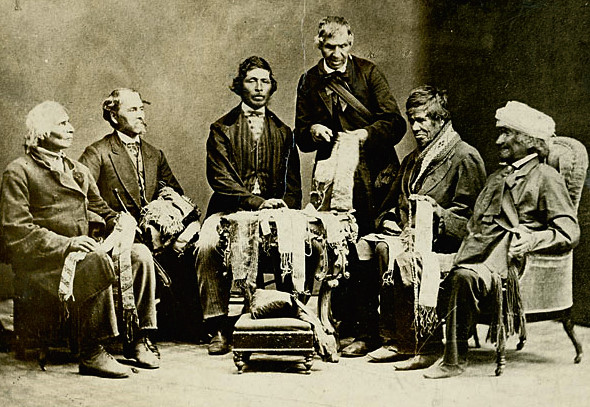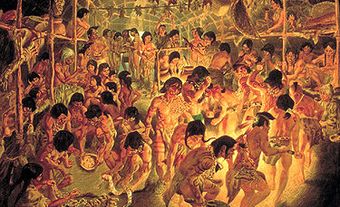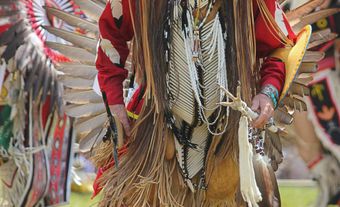The Seneca (Onöndowa’ga, “People of the Great Hills”) are an Indigenous nation. Known as the “Keepers of the Western Door,” they are the western-most member of the Haudenosaunee Confederacy with ancestral lands located south of Lake Ontario. Today, some Seneca people also live on Six Nations territory near Brantford, Ontario. (See also First Nations.)

Traditional Territory
Historically, the Seneca occupied territories south of Lake Ontario. In the mid-1600s, much of southern Ontario became Seneca hunting territory, until Ojibwe expansion into this region confined Seneca influence to south of the Great Lakes. Today, some Seneca people also live on Six Nations territory near Brantford, Ontario. (See also Indigenous Territory.)
Traditional Life
The Seneca, as well as other Haudenosaunee peoples, were often known as the “people of the longhouse.” Not only did the longhouse describe the type of dwelling in which they lived, but it also described the Haudenosaunee political alliance.
While many Seneca were converted to Christianity with colonization, some remained followers of the Handsome Lake religion. In 1799, Seneca chief Handsome Lake (Ganioda'yo) experienced visions that made people see him as a prophet. (See also Religion and Spirituality of Indigenous Peoples in Canada.)
History
The Seneca played a major role in the dispersal of the Huron-Wendat, Petun and Neutral Confederacy in the mid-17th century. Periodically at war with New France, all Seneca villages were burned by Governor Denonville in 1687. The Seneca took revenge by destroying Lachine, outside Montreal, two years later. (See also Lachine Raid.)
After the construction of the French fort at Niagara in the 1720s, the western Seneca frequently sided with the French in conflicts against the English. These same western Seneca in 1763 joined Obwandiyag (Pontiac) and his followers against the English, who had taken possession of former French posts in the Great Lakes.
During the American Revolution, the full Seneca supported the British, but only a small segment chose to follow Joseph Brant after the war to the Six Nations reserve in Canada. Most of the Seneca negotiated peace with the Americans, and still reside on reservations in the US.
Language and Culture
The Seneca speak a language that is part of the Iroquoian linguistic family. Considered endangered, elders and Indigenous communities work to preserve and promote the language. (See also Indigenous Languages in Canada.)
Like other Haudenosaunee peoples, the Seneca have a clan system. Clans are used to select social groups whose members trace descent from either male or female ancestors.
Some well-known Seneca leaders include Red Jacket (Sagoyewatha), Cornplanter (Kaintwakon), Handsome Lake (Ganioda'yo) and Little Beard (Sigwaahdohgwih). Together, they negotiated the Treaty of Canandaigua in 1794, which established the conditions for the purchase of lands from the Six Nations south of the Great Lakes. (See also Treaties with Indigenous Peoples in Canada.)


 Share on Facebook
Share on Facebook Share on X
Share on X Share by Email
Share by Email Share on Google Classroom
Share on Google Classroom




